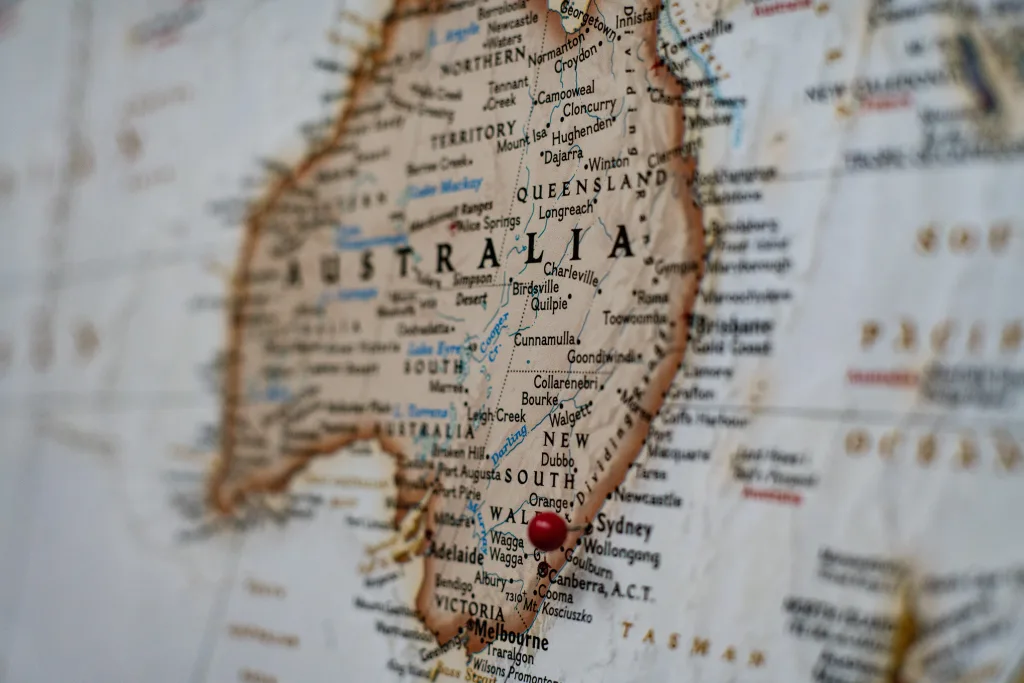Australia is a vast and diverse country with a unique climate that varies from region to region. One of the key factors that sets Australia apart from many other countries is its opposite seasons to the northern hemisphere. While the northern hemisphere experiences summer during the months of June, July, and August, Australia experiences winter during this time.
If you’re planning a trip to Australia and hoping to enjoy some sunny and warm weather, it’s important to note that the summer months in Australia are December, January, and February. These months are considered the hottest of the year, and many Australians take advantage of the warm weather by heading to the beach, enjoying outdoor activities, and soaking up the sun.
During summer, temperatures can soar, especially in the northern parts of the country. In places like Queensland and the Northern Territory, temperatures can reach well above 30 degrees Celsius (86 degrees Fahrenheit), and sometimes even higher. It’s important to stay hydrated and protect yourself from the sun’s rays by wearing sunscreen, a hat, and lightweight and breathable clothing.
If you’re not a fan of the scorching heat, or if you simply prefer cooler temperatures, you might want to consider visiting Australia during its winter months. From June to August, the country experiences its coldest weather. While winter in Australia is generally cool, temperatures can drop to as low as 5 degrees Celsius (41 degrees Fahrenheit), especially in the southern parts of the country.
During winter, you might also encounter some frosty nights, particularly in the inland regions. It’s a good idea to pack warm clothing, such as jackets, sweaters, and thermal layers, to keep yourself comfortable during the colder months. Additionally, be prepared for occasional rainfall, as winter in Australia is also known for its wetter weather.
When planning your trip to Australia, it’s essential to consider the different climate zones and adjust your itinerary accordingly. If you’re seeking a beach vacation and want to bask in the sun, the summer months of December, January, and February are the best time to visit. On the other hand, if you prefer milder temperatures and want to explore the country’s diverse landscapes, winter might be the perfect time for your Australian adventure.
Remember, Australia’s climate can vary greatly depending on the region you’re in, so it’s always a good idea to check the weather forecast for your specific destination before you travel. Whether you choose to visit during summer or winter, Australia offers a wealth of natural beauty, cultural experiences, and unique adventures that are sure to make your trip unforgettable.
What Month Is The Hottest In Australia?
The hottest months in Australia are December, January, and February. During these months, the temperatures soar and the heat can be quite intense. Many people choose to head south during this time to escape the sweltering heat.
In December, the summer is just beginning, and temperatures start to rise. January is typically the hottest month in Australia, with scorching temperatures across the country. February is also quite hot, with summer still in full swing.
During these months, it is important to take precautions to stay cool and hydrated. It is advisable to wear light and breathable clothing, use sunscreen, and drink plenty of water.
If you are not a fan of extreme heat, it may be a good idea to plan your visit to Australia during other times of the year. The weather in the southern parts of the country, such as Melbourne and Sydney, tends to be more moderate throughout the year.
In contrast, the northern parts of Australia, such as Queensland and the Northern Territory, experience a tropical climate with high humidity. These areas can be quite hot and humid even during the cooler months.
December, January, and February are the hottest months in Australia. If you prefer milder temperatures, it may be best to plan your visit during other times of the year or head south to escape the heat.

Does Australia Have 4 Seasons?
Australia does have four distinct seasons. However, it is important to note that the timing of these seasons is opposite to those in the northern hemisphere.
1. Summer (December to February): During this time, Australia experiences warm to hot temperatures. The northern regions of the country, such as Queensland and the Northern Territory, can have tropical climates with high humidity and frequent rainfall. In contrast, the southern regions, including Victoria, New South Wales, and South Australia, tend to have drier and hotter conditions, with occasional heatwaves and bushfires.
2. Autumn (March to May): Autumn in Australia is characterized by mild temperatures and changing foliage. The weather becomes cooler, especially in the southern parts of the country. It is a great time to visit regions like the Yarra Valley or the Adelaide Hills, where you can witness stunning autumn colors.
3. Winter (June to August): Winter in Australia varies across different regions. The northern parts generally have mild and dry winters, while the southern areas can experience colder temperatures and occasional snowfall in the higher altitude regions like the Snowy Mountains or Tasmania. It is a popular time for skiing and snowboarding enthusiasts to visit these areas.
4. Spring (September to November): Spring brings warmer temperatures and blooming flowers to Australia. It is a time of renewal and rejuvenation. The weather starts to become more pleasant, making it perfect for outdoor activities like hiking or visiting national parks.
It is worth noting that Australia’s vast size and diverse geography contribute to regional variations in climate. The northern regions typically have a tropical or subtropical climate, while the southern regions have a more temperate climate. Additionally, the central desert areas experience extreme temperatures and arid conditions throughout the year.
How Cold Is Australia In Winter?
Australia experiences cool temperatures during winter, with the mercury dropping to as low as 5 degrees Celsius. The winter months of June and July are generally the coldest. During this time, you can expect frosty nights in certain regions of Australia. It’s important to note that the climate can vary across different parts of the country, so the temperature may differ depending on the specific location you are in. To give you a clearer understanding, here are some key points about Australia’s winter climate:
– Average winter temperatures in Australia range from 8 to 18 degrees Celsius.
– The southern parts of Australia, such as Melbourne and Sydney, tend to have cooler winters compared to the northern regions.
– In the southern states like Victoria and Tasmania, temperatures can drop below 0 degrees Celsius, resulting in snowfall in the alpine regions.
– In the northern regions, such as Queensland and Northern Territory, winters are milder compared to the south, with temperatures rarely dropping below 10 degrees Celsius.
– Coastal areas generally have more moderate temperatures compared to inland regions, which can experience more extreme drops in temperature.
– It’s important to be prepared for the cool weather by packing appropriate clothing, including warm jackets, sweaters, and layers to keep you comfortable during your stay.
By being aware of the typical winter climate in Australia and taking appropriate measures to dress warmly, you can make the most of your visit and enjoy the various attractions the country has to offer during this time of the year.

Conclusion
Australia is a diverse and captivating country with a wide range of climates and seasons. Whether you’re seeking sun-soaked beaches or snowy mountain peaks, Australia has something to offer all year round. The hot summer months of December to February provide the perfect opportunity to explore the southern regions and escape the heat. On the other hand, the colder winter months of June to August offer a chance to venture up north and experience cooler temperatures and potentially frosty nights. It’s important to pack accordingly for your visit to Australia, taking into account the specific weather conditions of the season you’ll be visiting. Australia’s unique climate and seasonal variations make it a fascinating destination to explore at any time of the year.
